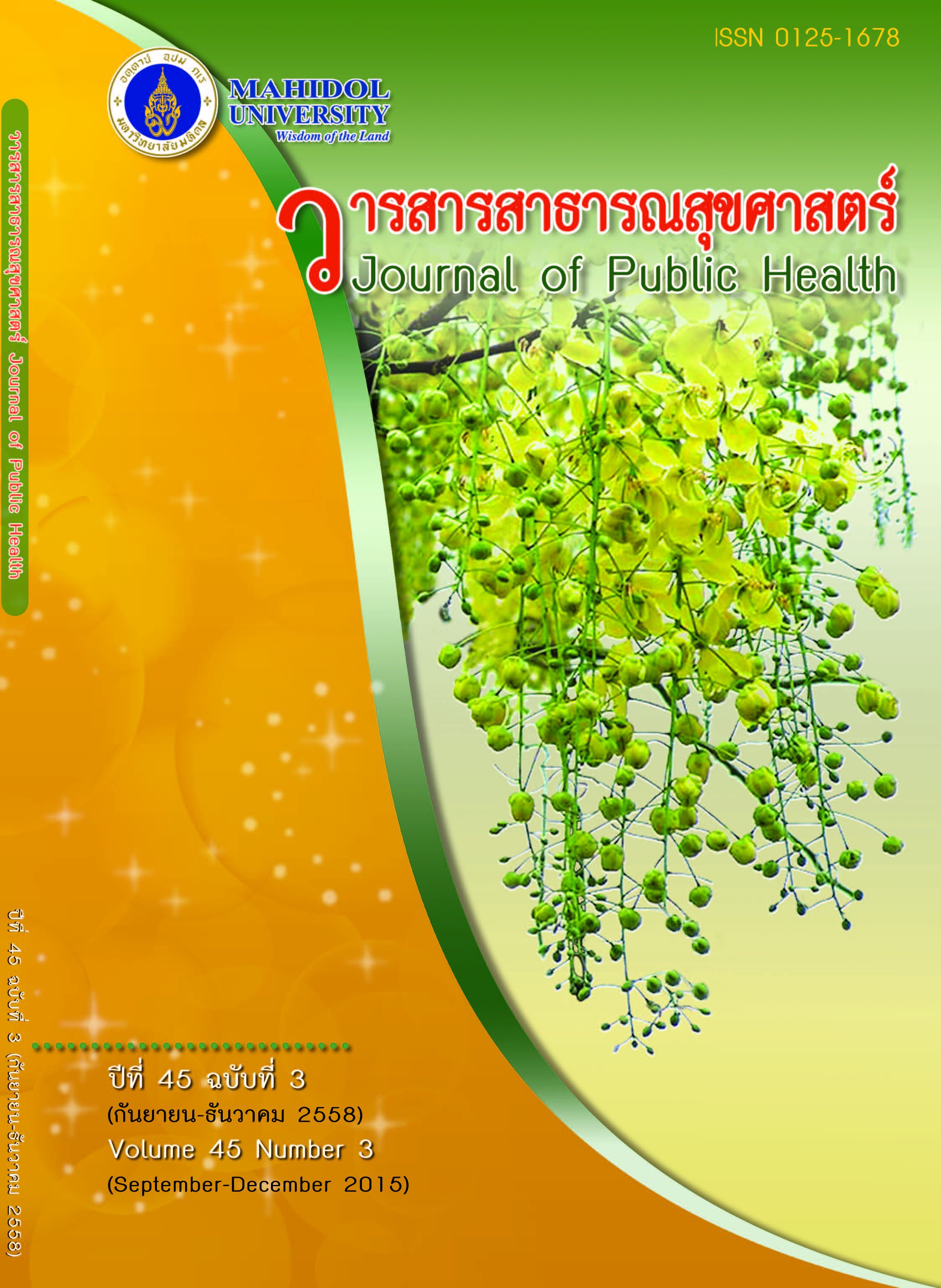ปัจจัยเสี่ยงที่มีความสัมพันธ์กับการติดเชื้อในกระแสเลือดของทารกแรกเกิดใน โรงพยาบาลมหาวิทยาลัยนเรศวร
Keywords:
ทารกแรกเกิด, ปัจจัยเสี่ยง, ภาวะติดเชื้อในกระแสเลือด, Neonate, Risk factor, Bloodstream infectionAbstract
บทคัดย่อ
การติดเชื้อในกระแสเลือดเป็นสาเหตุสำคัญในการเสียชีวิตของทารกแรกเกิด การวิจัยนี้เป็นการศึกษาแบบไปข้างหน้า ศึกษาปัจจัยเสี่ยงต่อการเกิดการติดเชื้อในกระแสเลือดของทารกแรกเกิดจนถึง 1 เดือนที่มารดามาคลอดในโรงพยาบาล ตั้งแต่เดือนพฤศจิกายน พ.ศ. 2555 ถึง เมษายน พ.ศ. 2557 โดยทำการเก็บข้อมูล วิเคราะห์ข้อมูลโดยใช้ความถี่ ร้อยละ Chi-square test วิเคราะห์ปัจจัยเสี่ยงที่มีผลทำให้เกิดการติดเชื้อโดยใช้ multiple logistic regression ผลการศึกษาพบว่า มีทารกแรกเกิดจำนวน 140 ราย เป็นกลุ่มที่มีการติดเชื้อในกระแสเลือด 47 ราย (ร้อยละ 33.6) มีทารกเสียชีวิต 1 ราย (ร้อยละ 2.1) ปัจจัยเสี่ยงที่มีผลต่อการติดเชื้อในกระแสเลือดของทารกแรกเกิด คือ มารดามีไข้ก่อนคลอดมากกว่าหรือเท่ากับ 38 องศาเซลเซียส (adj OR=18.471; 95%CI=2.071-164.745) มารดามีน้ำเดินก่อนคลอดมากกว่าหรือเท่ากับ 18 ชั่วโมง (adj OR=16.202; 95%CI=1.809-145.100) และการที่ทารกได้รับสารอาหารทางหลอดเลือดดำ (adj OR=9.331; 95%CI = 2.715-32.076) สรุป การดูแลรักษากลุ่มทารกที่มารดามีไข้ก่อนคลอด และมีน้ำเดินก่อนคลอดมากกว่าหรือเท่ากับ 18 ชั่วโมงอย่างใกล้ชิดโดยพิจารณาให้ยาปฏิชีวนะอย่างรวดเร็วและเหมาะสม รวมถึงทารกที่มีการให้สารอาหารทางหลอดเลือดดำตามข้อบ่งชี้ โดยเน้นวิธีปลอดเชื้อเพื่อลดปัจจัยเสี่ยงการติดเชื้อในกระแสเลือดของทารก
Risk Factors Associated with Neonatal Sepsis Admitted to Naresuan University Hospital
ABSTRACT
Bloodstream infection is an important cause of neonatal death. This was a prospective study to determine risk factors associated with neonatal sepsis starting at birth until 1 month of age with delivery in a hospital from November 2012 to April 2014. Data was collected and analyzed by frequency, percentage, Chi-square test and through multiple logistic regressions to identify risk factors associated with neonatal sepsis. The results showed that of a total of 140 neonates, 47 neonates (33.6%) developed sepsis and one patient died (2.1%). Multiple logistic regressions analysis showed that maternal fever ≥38°C (adj OR=18.471; 95%CI=2.071-164.745), premature rupture of membrane ≥18 hours (adj OR=16.202; 95%CI=1.809-145.100) and the use of parenteral nutrition (adj OR=9.331; 95%CI = 2.715-32.076) were risk factors associated with neonatal sepsis. In conclusion, the treatment of neonates, whose mother had fever and premature rupture of membrane ≥18 hours, should be closely monitored. Further, administration of antibiotics should be considered for quick appropriate treatment, including the use of total parenteral nutrition according to indications as well as observance of sterile technique to decrease the risk factors of sepsis in neonates.
Downloads
Issue
Section
License
Creative Commons License CC-BY-ND


